Britain’s Legendary Brown Bess
December 21st, 2021
6 minute read
William Pickering was out of his depth. Born into poverty in the slums of Birmingham, England in 1758, he had rightfully expected to live out his days toiling in the ironworks alongside his father. Neither of the Pickerings had any real formal education.
It was the soul-crushing drudgery that had ultimately driven him from home. Bill Pickering reported to his local recruiting station, proved that he had the requisite minimum number of opposing teeth, and made his mark on the enlistment form. Now fourteen months later he crouched in a reinforced redoubt outside Yorktown, Virginia, under the command of Charles Cornwallis. He was fairly certain he was about to die.
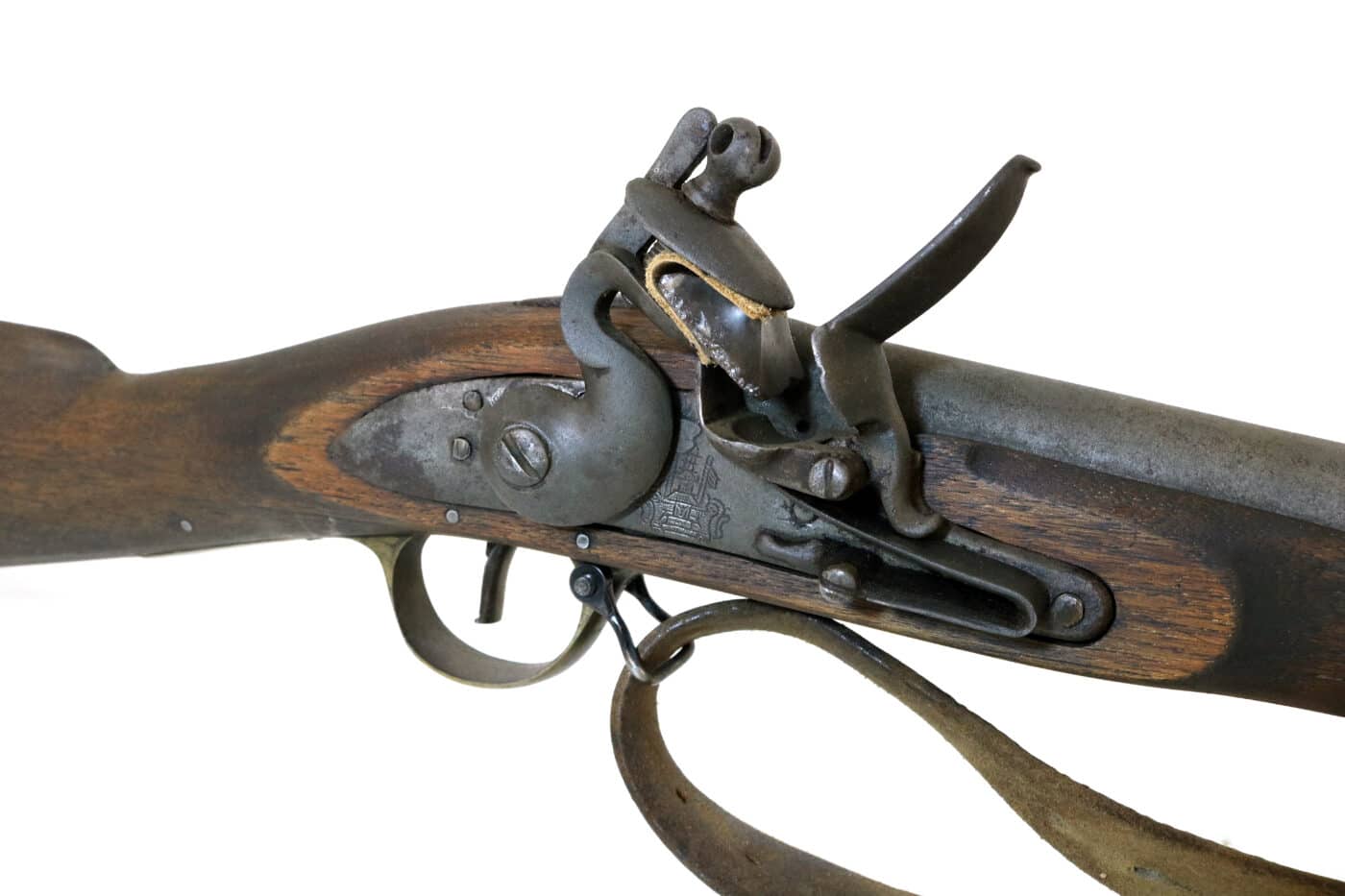
The colonists advanced behind their bayonets, their heavy muskets silent. They hacked their way through the wooden abatis that Pickering and his comrades had felled to block the advances and began to scale the works. On the command of his senior NCO, William Pickering and 69 of his mates lined up their Brown Bess muskets and pulled their actions to full cock. At a range of 50 yards, his Sergeant gave the command to fire, and all 70 British weapons detonated in a single, ragged volley.
As the smoke cleared, Pickering’s blood chilled. The failing sun danced across dozens of American bayonets as the colonists kept coming. Pickering looked to his left and right before dropping his musket and throwing up his hands. The imminent prospect of cold steel rearranging a man’s entrails can be a powerful motivator. Three days later Cornwallis surrendered in absentia, claiming an illness.
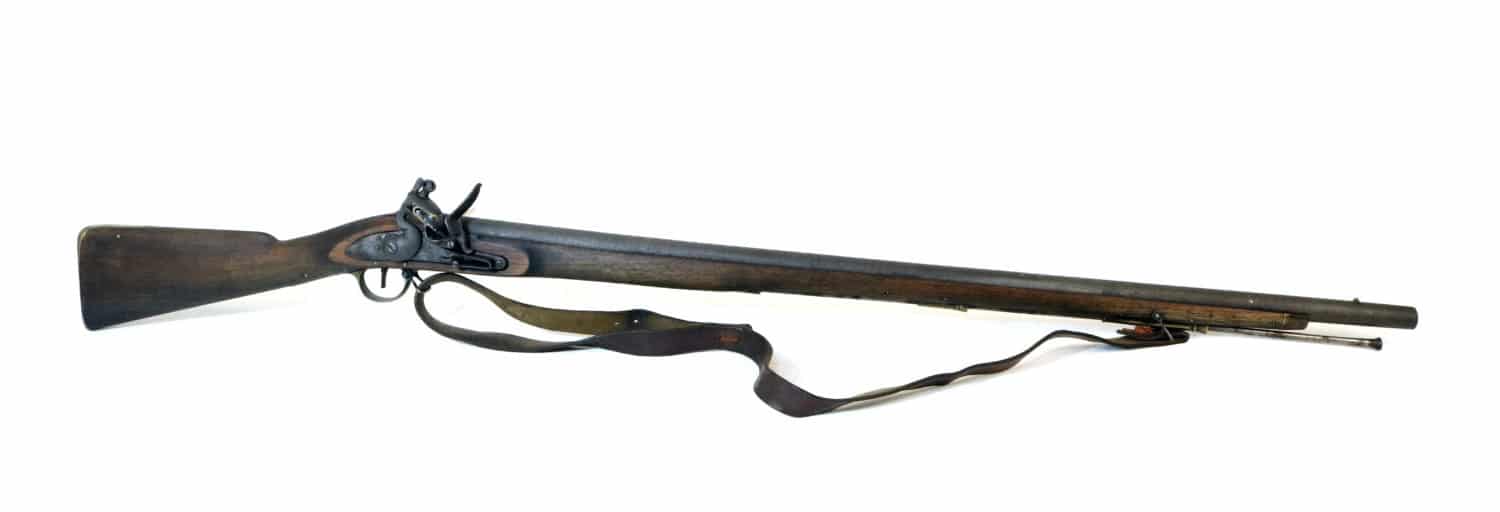
William Pickering was treated surprisingly well by the victorious Americans. As a result, he was among the roughly 10 percent of defeated British soldiers who elected to remain behind in the new nation and start a fresh life. By the time of his death, he was a landowner with three sons and a modest plantation. Without realizing it, William Pickering’s story was the beginning of the American dream.
The Weapon
The British Brown Bess was first introduced in 1722. The formal appellation was the Land Pattern Musket, and it served until 1838. Both the British and their opponents used these weapons in dozens of wars across the globe. The Brown Bess evolved through several variations during its protracted service life.

Nobody is really certain where the term Brown Bess originated. There are lots of suggestions, none of which is completely reliable. The most likely is that the term Brown Bess somehow spawns from some forgotten bawdy harlot, an otherwise nameless prostitute who found herself unusually popular among British soldiers centuries ago. Rudyard Kipling’s 1911 poem titled, “Brown Bess” implied this to have been the case. The potentially vulgar origins of the term just add to the romance of the piece.
Tactical Details
The maximum effective range was listed as 300 yards. A skilled and drilled Redcoat was expected to get off four rounds per minute. In reality, the smoothbore gun was only really reliably effective at less than 100 yards, but it inflicted some truly ghastly wounds.
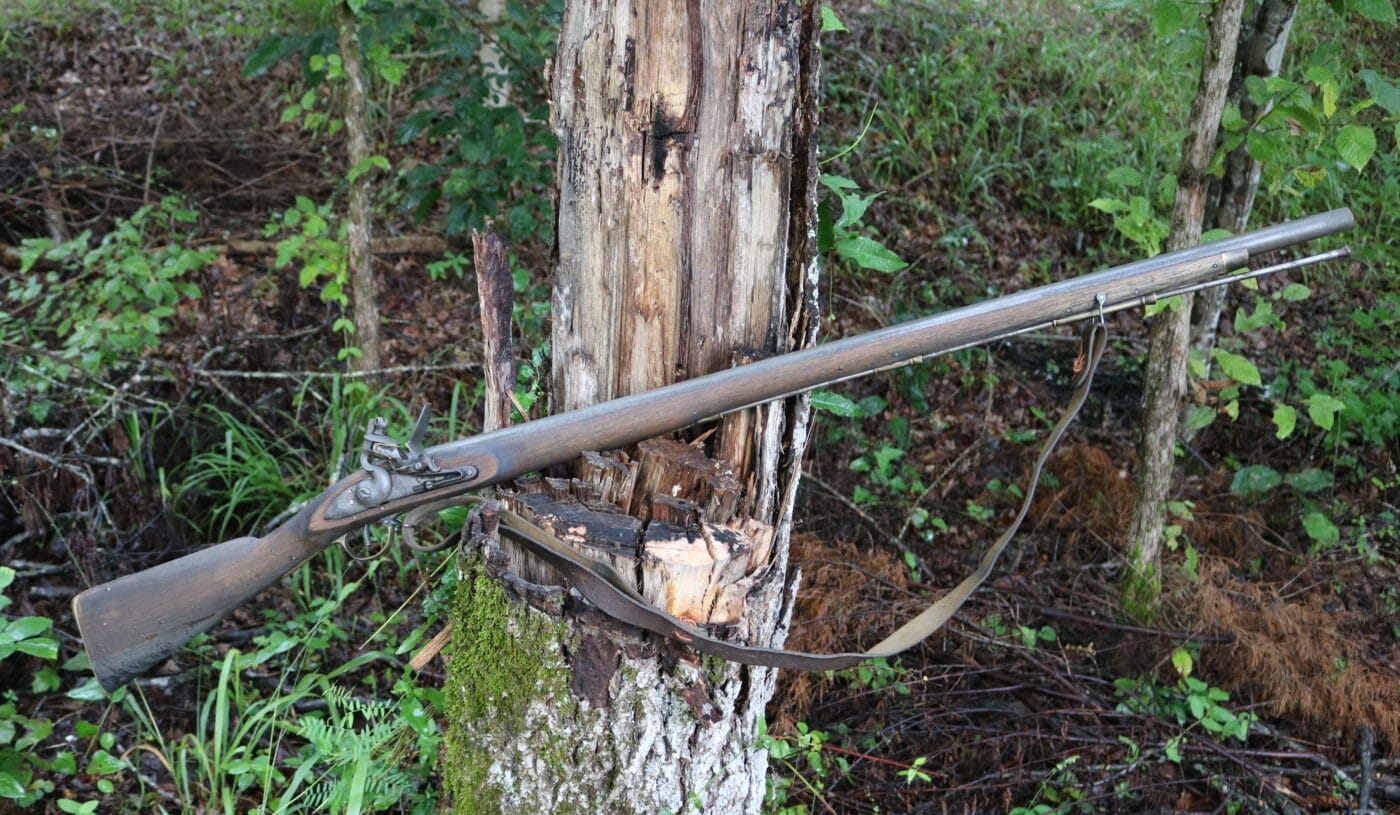
For close-quarters work at bad breath ranges, the Brown Bess was frequently loaded with buck and ball, a devastating combination of buckshot atop a musket ball. Imagine the Royal Navy repelling boarders in The Pirates of the Caribbean if you need an example. The bore was a gaping 0.75″, but the balls were a bit undersized to compensate for the inevitable muzzle fouling. As a result, the gun was innately inaccurate. The most common version of the weapon weighed 10.5 lbs. and was 58.5″ long.
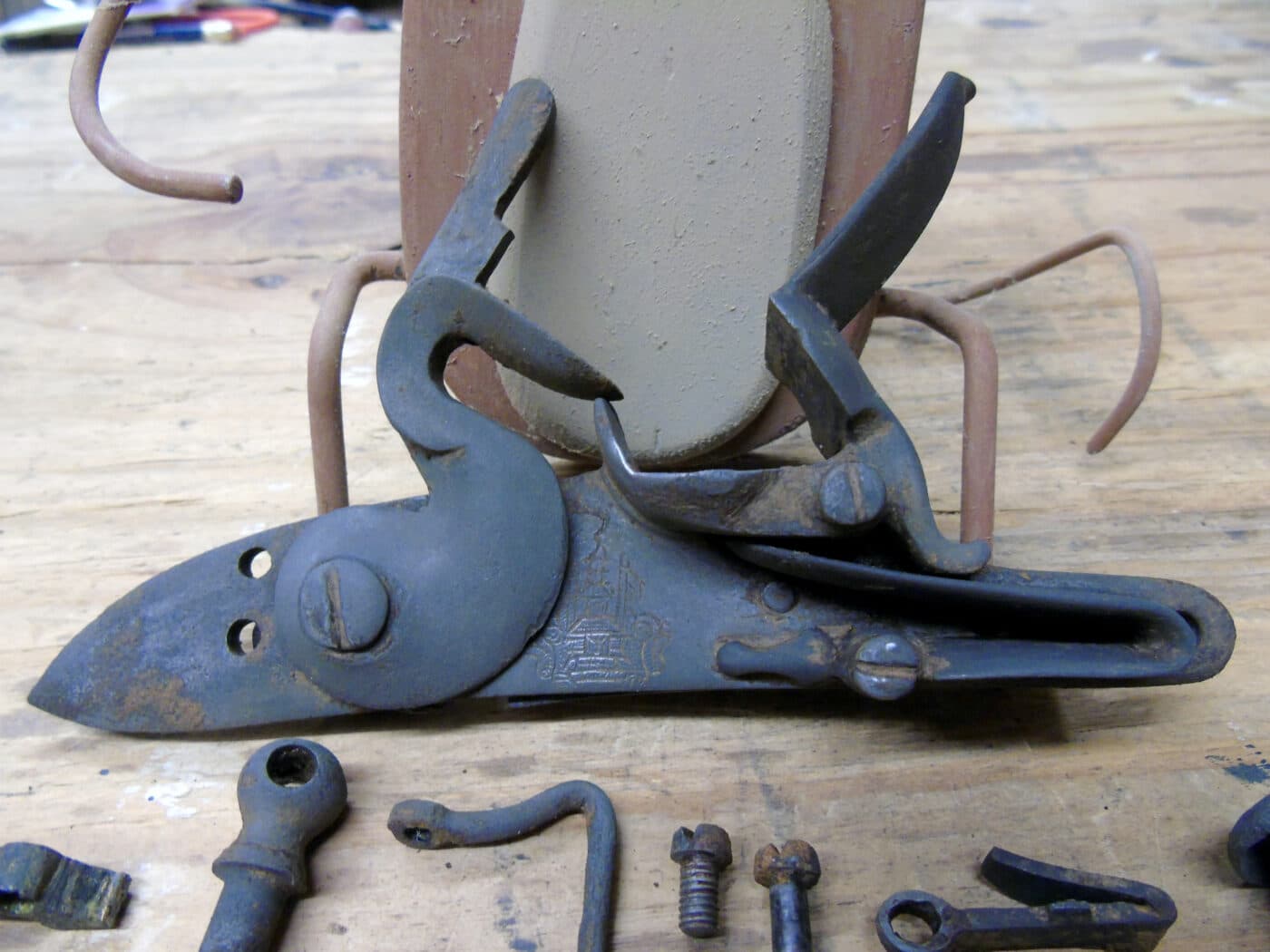
Around four million of these old muskets saw service. To put that in perspective, using the most modern production techniques available at the time and operating at maximum capacity, American industry produced some 6,121,309 M1 Carbines via 10 major manufacturers during World War II. The guys who made these old muskets used machines powered by horses, water or steam. An original Brown Bess is typically both crazy expensive and quite long in the tooth these days.
Cutting-Edge Tech
While the Brown Bess is fairly archaic by modern standards, in its day it reflected the state of the military art. In the skilled hands of British troops, the Land Pattern Musket enforced the will of the English regent around the globe. A decent Brown Bess musket adds flare to any seasoned gun collection.
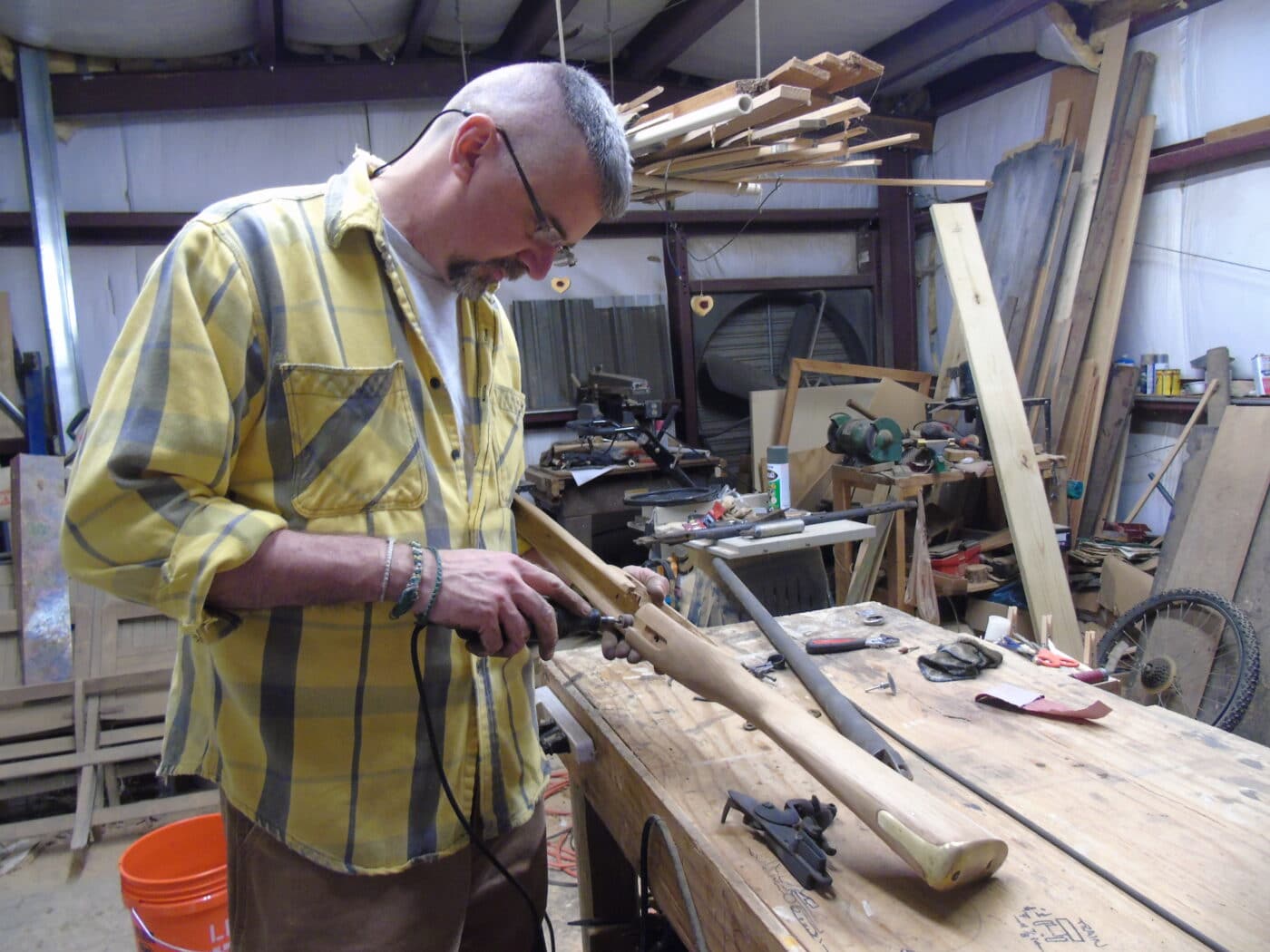
My Brown Bess was a proper fixer-upper purchased online. What came out of the box looked like it had been stored at the bottom of the ocean. The wood was worm-eaten and friable, though the metal bits retained ample character. However, it didn’t look much like a regal British military weapon. As a result, my kit included a new-made buttstock along with fresh screws and a few modern replica brass bits.
In addition to general condition and provenance, the markings on the lockplate on the right side of the gun drive the weapon’s collectability and value. Mine was relatively inexpensive and sports a Nepalese crest on the lock. The same gun with an original East India Trading Company lock is considerably spendier. While I would love to have added a Pirates of the Caribbean musket to my own collection, they were a bit too rich for my blood.
British Land Pattern Musket Specifications
| Caliber | 0.75″ |
| Barrel | 46″ |
| Weight | 10.5 lbs. |
| Overall Length | 58.5″ |
| Sights | Cast front |
| Stock | Wood |
| Action | Flintlock |
Resurrecting the Dead
I stripped all the parts and soaked them in Evapo-Rust, a fairly miraculous rust remover that strips away scale and corrosion faster than a congressman sheds scruples. I built an improvised soaking tank out of a length of large-bore PVC pipe and a pair of end caps. A little subsequent attention with a wire brush gave us something promising.
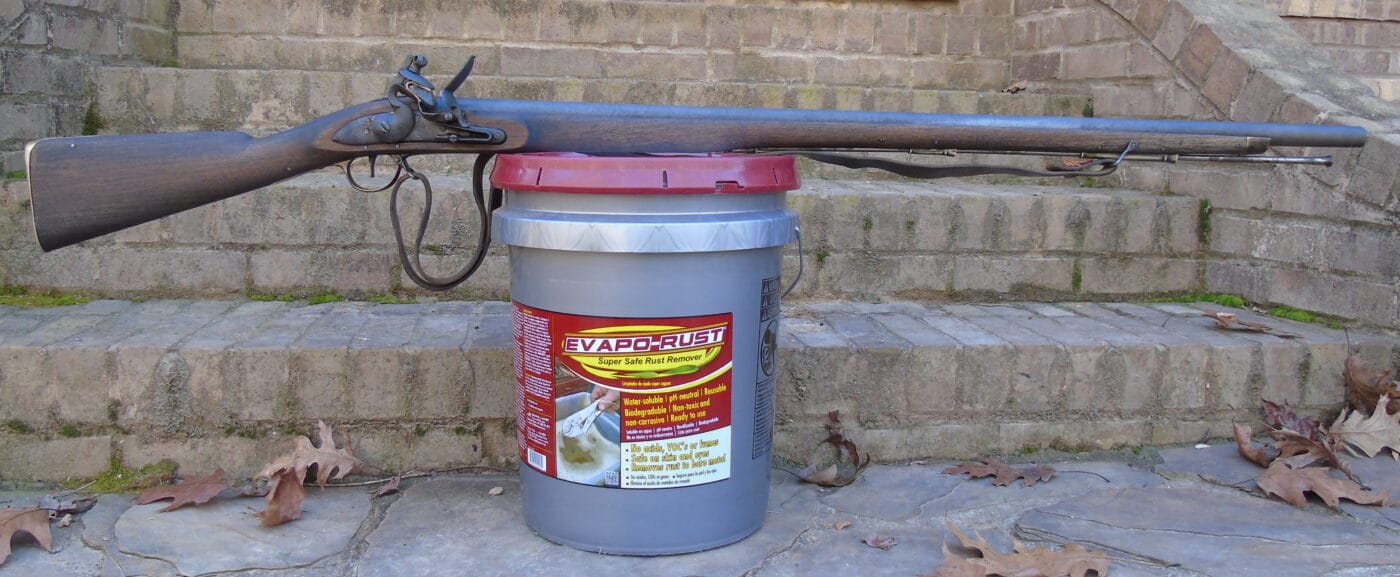
If you can change the oil in your car, you are overqualified for this project. There are a few tricky holes that must be drilled to accommodate the retaining pins for the barrel in the stock, but they’re not unduly daunting. I sanded the stock to fit and finished it out with hand-rubbed linseed oil.
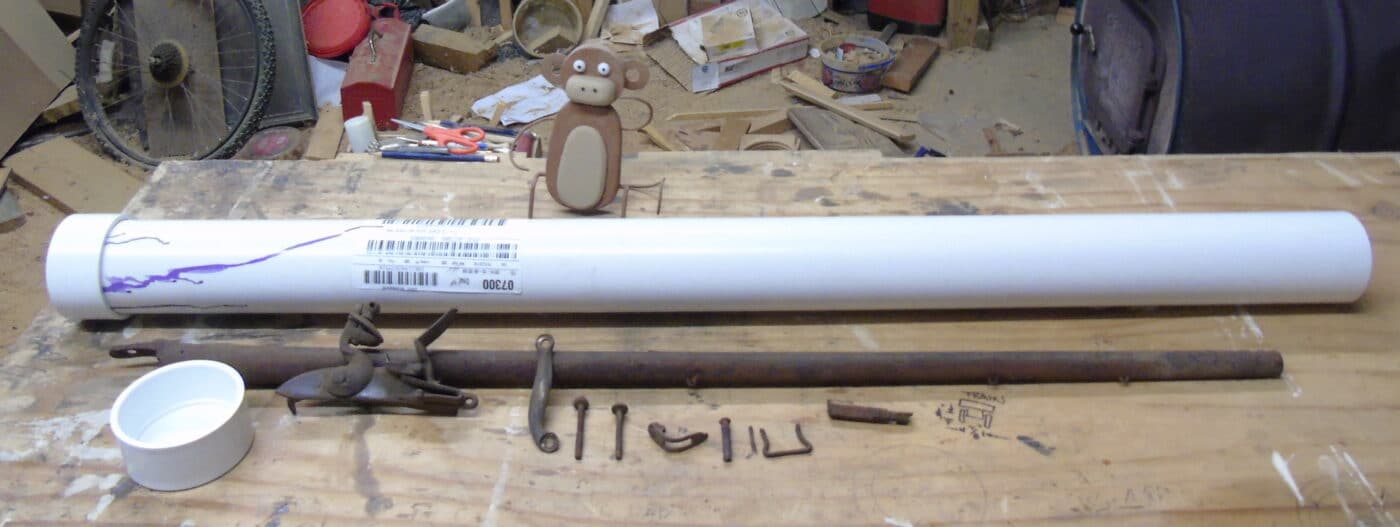
The mainspring is intact, but the hammer does not lock back when retracted. It is on my list to find some fresh new-production entrails to use in the lock, but I haven’t yet gotten around to it. These old guns were all hand-fitted, so don’t expect parts from a different source to be a drop-in fit. No matter. I wouldn’t shoot this thing for love or money.
Ruminations
A vintage Revolutionary War-era Brown Bess musket serves as punctuation for any proper military weapons collection. The Springfield Armory M1A, SAINT, and 1911 series offer plenty of contemporary cred, but the Brown Bess is really where it all began. The Brown Bess was arguably the world’s first truly mass-produced infantry combat weapon. Everything else evolved from there.
The Brown Bess helped shape the affairs of man. With it, the English spread their Pax Britannia across the globe. The weapon is a period icon. To heft one of these old guns is to legitimately touch history.
Editor’s Note: Please be sure to check out The Armory Life Forum, where you can comment about our daily articles, as well as just talk guns and gear. Click the “Go To Forum Thread” link below to jump in and discuss this article and much more!
Join the Discussion
Continue Reading
Did you enjoy this article?

 163
163






